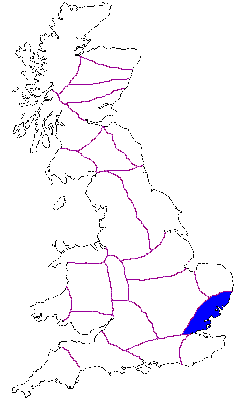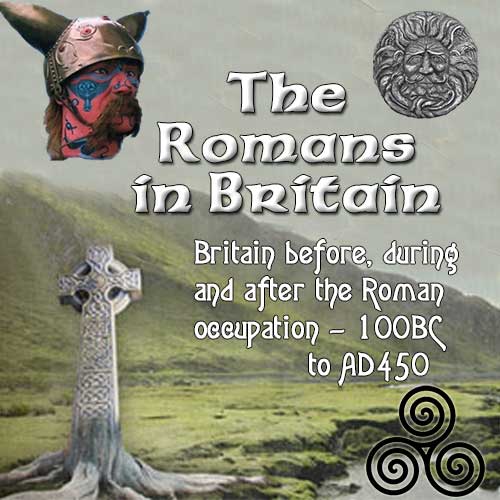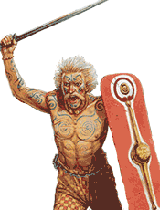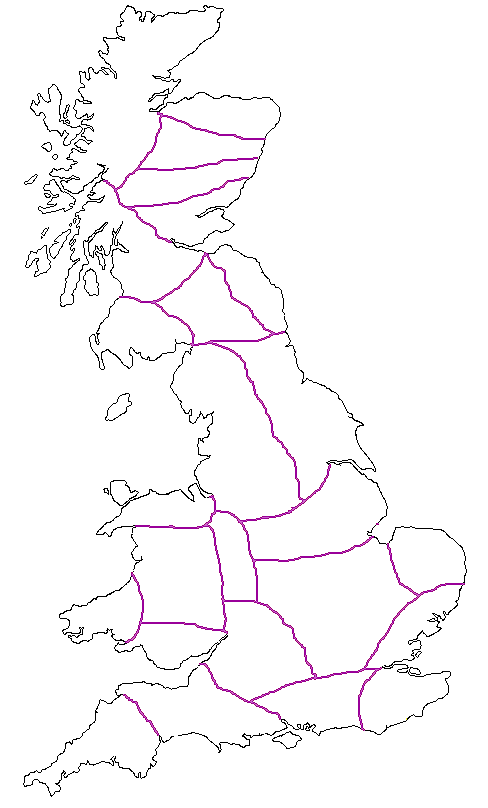The Trinovantes Tribe
Background to the Trinovantes
Location of the tribe
 Essex and part of Suffolk.
Essex and part of Suffolk.
Background information
It is possible that the Trinovantes were one of only two British tribes knew of Caesar's intentions to cross the channel to Britain and so sent out ambassadors to the Romans in Gaul in an attempt to ensure they would be well treated should the Roman army invade and take over Britain.
Caesar:
'The Trinobantes, the strongest state, perhaps in those parts, sent deputies to Caesar, promising to
surrender to him and to do his commands, and beseeching him to protect Mandubracius from outrage at the
hands of Cassivellaunus, and to send him to their state as ruler and sovereign lord.'
Mandubracius was the exiled king of the Trinobantes. His father (name unknown) had been killed by Cassivellaunus, and the Trinovantian prince forced to flee to the continent and the protection of Caesar.
Shortly after the Atrebates tribe were taken into his protection, Caesar defeated the army of Cassivellaunus near Wheathamstead. Seeing all was lost, their ruler, Cassivellaunus surrendered, trusting to the mercy of Caesar.
Caesar waited until all of the British hostages had been delivered to him in Kent, then moved his forces back to the continent where they spent the winter of 54-53BC. Prior to departing, he issued a stern warning to the Catuvellauni
Caesar:
He (Caesar) straitly charged Cassivellaunus to do no hurt to Mandubracius or the Trinobantes.'
Julius Caesar never returned to Britain, and the Romans did not come again in force until the invasion of 43AD. But the fear he had instilled into the Catuvellauni assured the Trinovantes there would be no trouble from their neighbours.
When the Roman general Varus lost three legions in the German Teutoberger forest in AD9, it inspired Cunobelin of the Catuvellauni took the opportunity to attack and capture the Trinovantian capital Camulodonum. The situation in Germania was serious, and Cunobelin had chosen his moment with care. The Romans were now heavily committed to defending their borders in Europe, so Britain was put on hold.
The Trinovantes and Boudicca
In 60AD, the Iceni under Queen Boudicca rose up in defiance of their Roman masters and began the rebellion that was to change Britain under the Romans. It is probable that the reasons for their joining the revolt was that because the Romans had not kept their word and forced the Catuvellauni back to their own territory. Also, they had not had their tribal lands returned to them after the defeat of Caratacus and the Catuvellauni. Coupled with the fact the Romans were taking vast amounts of land from in and around Camulodonum to build a Colonia for retired Roman soldiers, the Trinovantes were understandably sympathetic to the Iceni cause.
Tacitus:
'They flew to arms, and incited to rebellion the Trinobantes and others, who, not yet broken by servitude,
had entered into a secret and treasonable compact to resume their independence.'
Principal towns and settlements in Trinovantes territory
Caesaromagus - (Widford, nr. Chelmsford, Essex) The Roman Civitas capital of the Trinovantes.
Camulodonum - (Colchester, Essex) - The original capital of the Trinovantes which was taken from they by the Catuvellauni in 9AD. Camulodonum was the site of the first Roman Legionary Fortress in Britain, and was later to become the first Roman colonia colonia in the province. It was this colonisation by the Romans that was a major contributing factor to the Boudiccan rebellion of 60AD..
Canonium - (Rivenhall, Essex) - Settlement.
Combretovium - (Baylham House, nr. Coddenham, Suffolk) - A minor settlement at an important road junction.
Long Melford (Suffolk) - Minor settlement and posting station.
Scole (Norfolk) - Posting station and minor settlement on the road north between Camulodunum and Venta Icenorum..
Sitomagus - (Dunwich, Suffolk) - Settlement, now below sea level.
Stoke Ash (Suffolk) - Posting station on the road north between Camulodunum and Venta Icenorum.
Some of the Trinovantes kings and queens
Mandubracius Was regarded by Caesar as the most powerful of the British tribal monarchs. Little is known about him. His possible sucessor, Addedomaros who started his rule around 15BC,may have been his son or grandson, There are no recordings of this. Indeed, it is possible that Mandubracius was the last of his line. If he did not have any children of his own, it would explain why the kingship of the Trinovantes passed to the Addedomaros family. There appears to have been a power struggle in the Trinovantes higher order for the right to rule, with the Addedomaros being victorious. The Catuvellaunian king Tasciovanus later claimed the thone of the Trinovantes and the two tribes became opposing sides in a war won by the Trinovantes, which enabled the Addedomaros to hold the throne.
Addedomaros Was the known ruler of the Trinovantes to follow Mandubracius. Almost immediately after his took the throne, some time between 25 and 15BC, he moved his capital from Braughing ner Hertford to a new site on the east coast which he named Camulodunum which means 'the fort of the war god Camulos'. .It is possible that the Trinovantes were taken over by the Catuvellauni as the coins of the period from about 15BC, had strong markings indicating Catuvellauni influences. He reigned for about ten years before being succeeded by his son Dubnovellaunus around 10-5BC.
Dubnovellaunus Succeeded Addedomaros to the Trinovantian throne about 10-5BC and ruled for several years before being overthrown by the Catuvellauni under the leadership of Cunobelin. He should not be confused with Dubnovellaunus of the Cantium.
























